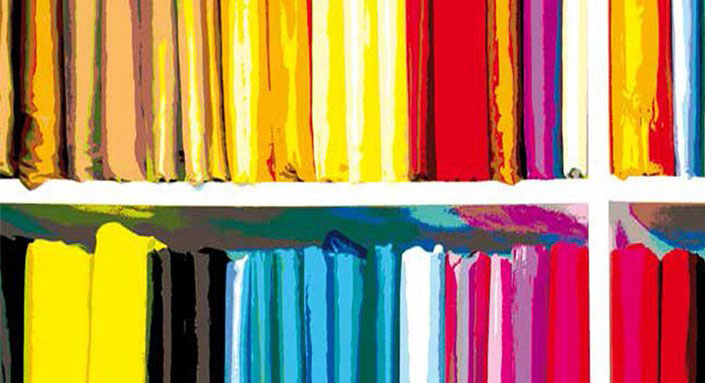
Source: fibre2fashion
Foam dyeing and finishing of textiles has demonstrated as an economically very attractive technology to conserve energy. Foam finishing has a wide application on cotton, synthetic fibres and their blends. Senior industry consultant,CN Sivaramakrishnan, who has over 35 years' experience in wet processing and specialty chemicals manufacturing industries, explains why foam dyeing & finishing has caught the attention of the textile processing industry as a low add-on technique.
The wet processing of textiles consumes about 60 per cent of the total, primarily to dry fabrics. Wet processing encompasses those processes which convert fabrics off the loom or knitting machine into finished goods. The major processes include scouring, bleaching, dyeing, printing and finishing. At each stage huge quantities of water is also consumed.
In conventional continuous wet processing (except printing), the fabric is immersed in a bath containing a dilute dispersion of auxiliaries and chemicals. The saturated fabric is then passed through squeeze rolls to extract excess liquor and finally travels into a dry oven where the fabric is dried and to a high temperature chamber where it is cured. The amount of heat energy consumed at each stage is quite enormous and processors are forced to look at alternative sources of energy savings at each stage of processing. Foam dyeing has come to the centre stage as a result of rapidly escalating energy costs, and the conservation of water and energy is a subject of debate in all forums.
Modern jet dyeing machines allow dyeing of cotton below a liquor ratio of 8:1, and further reduction with foam is not practical, because there would be insufficient water for dissolving the dyes and chemicals. Hydrophobic fibres are dyed with essentially water insoluble disperse dyes, and dyeing at much lower liquor ratios is practical. Dyeing of textured polyester on a one jet or soft flow machine is quite successful at a very low liquor ratio, but on a multi-port jet there is insufficient bath to ensure even distribution of the dyes throughout all the tubes.
Advantages of foam finishing technology:
1) Significant energy savings as there is minimal water
2) Savings in dyes - auxiliaries and chemicals
3) Minimised down time as compared to pad dry cure technique
4) Can be applied on all kinds of fabric blends and compositions
5) Reduce environmental pollution and solid waste.
Foam dyeing and finishing of textiles has demonstrated as an economically very attractive technology to conserve energy. Foam finishing has a wide application on cotton, synthetic fibres and their blends. Special equipments can be designed for foam sizing, bleaching, mercerizing dyeing and finishing. Any type of finish can be obtained using foam finishing technology.
Wet pick-up, the amount of finish liquor applied to a fabric is expressed as a percentage based on the dry weight of the fabric. Dry add-on - the amount of solids finish applied to the fabric is expressed as a percentage of the dry weight of untreated fabric.
Foam finishing technology involves the use of a rapidly-breaking low-density foam or froth as the delivery medium for finishing chemicals, clearly defined metering and flow control system for the transfer of foam to the substrate, pressure-driven impregnation of the foam into the substrate, an applicator system to allow uniform high-speed application and collapse of the foam in a single step. The semi-stable foam is necessary to get spontaneous foam collapse and spreading though the substrate, and is in contrast to stable foams specified in various foam-coating processes normally requiring a separate step to break and distribute the foam through the textile material. The process leads to reduction in the consumption of chemical agents per unit of fabric because foam finishing provides for more uniform distribution of chemicals within the fabric.
